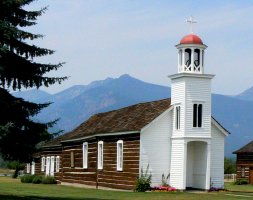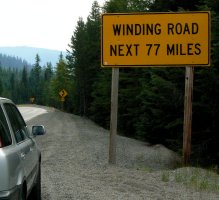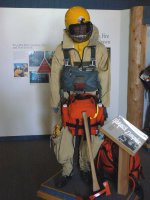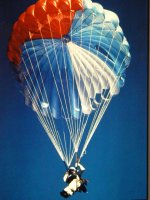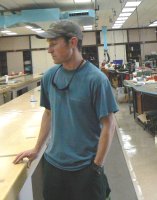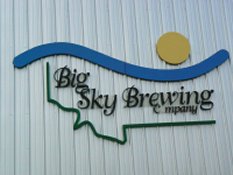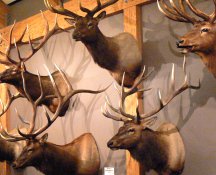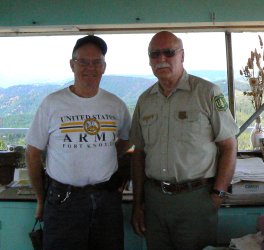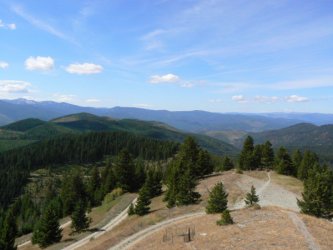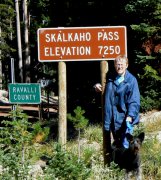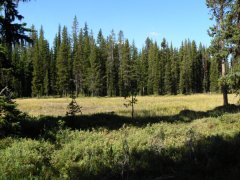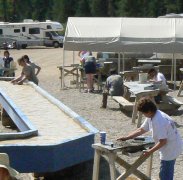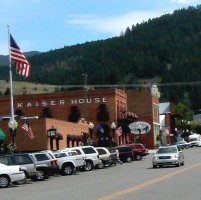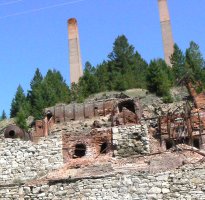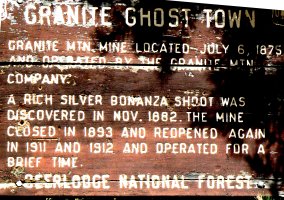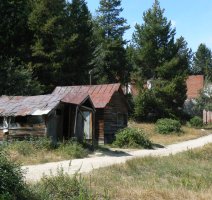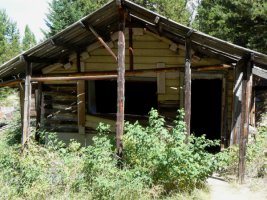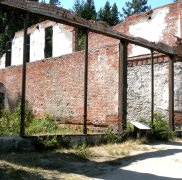In our two month stay at Lee Metcalf NWR we tried to see all of the important sights in that area. We began by visiting the nearest town, Stevensville, which was the first permanent European settlement in what is today Montana.
Stevensville, locally called Stevi, is a friendly and historic town but very small. Just fifteen miles to our north was the town of Lolo which is the location of "Traveler's Rest," so named by Lewis & Clark when they camped there to rest before their crossing of the Bitterroot Mountains as they went west and again upon their return in the spring. The park is not well developed but it is the only campground of that expedition which has been archeologically proven to be in the exact spot where the party camped. As you go west on US12 you climb to the top of Lolo Pass and just over the top it this sign about 77 miles of winding road.
Missoula is home to one of the largest smoke jumper bases in the US as well as one of five training schools for this work. If you stop in that area a visit to the school for a tour will be time well spent. The tour is lead by one of the jumpers from the ready room as there is at least one crew ready to leave within ten minutes notice at all times during fire season.
Missoula is also home to two outstanding breweries and our favorite product was "Moose Drool," an excellent German dark brew. Both breweries have free tasting rooms with generous samples and other things of interest. On the north side of Missoula is the Rocky Mountain Elk Foundation. This non-profit, private organization has done much to keep the elk at healthy populations and their visitor center is outstanding.
At Blue Mountain Recreation Area, just to the west of Missoula, there is a gravel road which leads nine miles up the mountain to an active fire lookout tower. The lookout has manned this same tower each summer for the past 33 years. He welcomes visitors and it is an experience not to be missed. The entire drive is scenic and the road is passable for any vehicle, although a little steep in places.
One of the most unique trips we made while here was a loop that meant going up and over Skilkaho Pass via a road that has about 20 miles of gravel and which is not open in winter. It is a very well traveled road because it cuts off about 50 miles on a trip from Butte to the Bitterroot Valley. There are parts of the road that are narrow and require use of a turn-out to meet traffic on the top four miles of the road but the trip is a wonderful experience! On the east side of the pass there is a sapphire mine where for a fee visitors can search for their own stones.
Our next stop was Phillipsburg, an old mining town which today serves the local ranch community and the tourists that manage to get that far off the beaten path. It is a great town with many historic buildings and a really great restaurant! We then took a quick trip to the ghost town of Kirkville.
The trip up to Granite is by 4WD road but the road is passable with 2WD if you have fairly good clearance and the road is dry. The town was quite large and many building still exist. To really explore the town could easily take several hours. You can almost feel the presence of past residents.
We saw many other interesting sites while in Montana, but this page should give visitors some feel for where we visited.


